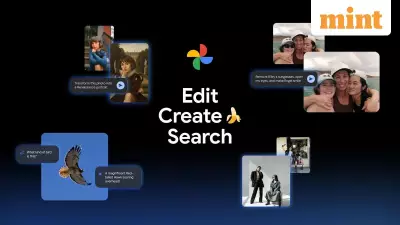
Small businesses across India are discovering the transformative power of artificial intelligence, using tools like ChatGPT and Google's NotebookLM to streamline operations and cut costs without expanding their workforce. This trend mirrors global patterns where entrepreneurs are finding innovative ways to leverage AI technology.
AI as Chief Financial Officer
Mike Salvatore, a 44-year-old business owner running Heritage Hospitality Group in Chicago, has completely transformed his financial management approach using AI. He owns two cafes, two bars, and a bike shop, and previously conducted cost analysis reports only once or twice annually, spending hours manually calculating potential price adjustments based on raw material expenses.
Now, with OpenAI's ChatGPT, Salvatore performs these crucial financial assessments every three weeks with remarkable efficiency. He also integrates data from his point-of-sale system and QuickBooks bookkeeping service into Google's NotebookLM AI tool, which generates podcast-style updates about business performance and improvement opportunities that he shares with his management team.
"It's essentially my CFO," Salvatore remarked about his AI systems. "Every day is a new use case." While he finds it challenging to quantify exact savings, the impact is evident in his staffing decisions—he now employs just one bar manager instead of two and didn't replace an event planner who departed earlier this year.
The AI Adoption Surge Among Small Enterprises
While large corporations deploy dedicated teams to develop AI strategies, small businesses are taking a more hands-on, experimental approach. According to an August report from the U.S. Chamber of Commerce, 58% of approximately 3,800 surveyed small businesses reported using generative AI. This represents a significant increase from 40% in 2024 and more than double the adoption rate from two years prior.
The applications are diverse and practical across various industries:
- Restaurants utilize AI for scheduling worker shifts efficiently
- Event planners employ AI for creating seating arrangements and providing quotes
- Interior designers use image-generation tools to visualize color changes and room layouts
Real-World AI Implementation Success Stories
At The Story of Ramen, a San Francisco cooking school, 53-year-old owner Manville Chan has deployed AI as a customer service representative. The school receives customer emails around the clock, creating response demands that didn't justify hiring administrative staff.
Chan began experimenting with AI about a year ago, initially using it to draft emails and marketing materials including blog posts and social media content. His ultimate goal was automating responses to all customer inquiries. He developed a sophisticated system where Gemini reads incoming emails to assess customer needs, while ChatGPT drafts replies due to its more natural writing style.
Initially, Chan faced challenges with AI hallucinations—incorrect information generated by the systems. In one instance, a customer inquired about hosting classes at their home, and despite the school not offering house calls, AI drafted a positive response. "There's a lot of common questions that people ask but once in a while people ask some weird questions that are not coded in the system yet," Chan explained. "If they don't know the answer, they will invent something."
Through persistent refinement of his prompting techniques, Chan improved the AI's accuracy dramatically. Today, he only needs to edit approximately 10% of email responses before sending, while 90% go out automatically with subsequent spot-checking.
Beyond Customer Service: Broader Business Applications
At Thread Logic, a custom-embroidered apparel company in a Minneapolis suburb, a young employee used AI to overcome website limitations. The team wanted to reorganize product information, but their hosting platform's fixed template prevented such changes. "AI wrote the code for us and told us where to put it, and it worked," said 61-year-old owner Jeff Taxdahl. "Five years ago, if we wanted to do this, it would have meant hiring a developer."
Lisa Gevelber, a Google vice president leading the company's Grow with Google economic-opportunity initiative, observes that small businesses demonstrate particular resourcefulness with AI. "They're scrappier. They're hungrier," she noted. Construction companies she's consulted use tools like NotebookLM to map job sites, estimate material costs, and create project blueprints.
Dustin Bruzenak, CEO of AI advisory and software firm Modern Logic, exemplifies efficient content creation using AI. The 44-year-old executive transforms biweekly podcast conversations with his business partner into short social media videos and blog posts for the company website. "From one hour out of an activity, we get an entire marketing campaign," Bruzenak explained.
The Minneapolis-based company employs six people and hasn't needed recent hiring expansions. The coding capabilities of AI mean Bruzenak only requires senior-level engineers. "I don't foresee ever needing to hire another junior engineer again," he stated confidently.
This growing trend demonstrates how small businesses worldwide, including those in India, are leveraging AI not just for cost reduction but for strategic advantage, operational efficiency, and competitive positioning in their respective markets.





